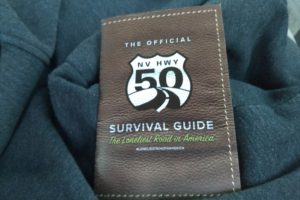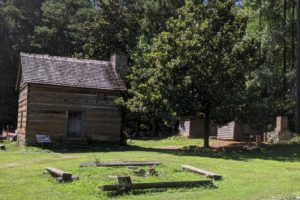Are you tired of words and ready to actually see the Smokey Mountains? We are. Join us as we view the beauty. This is the only national park we’ve been to where we haven’t had to drive through a front gate and show our senior pass since the main road north-south is a highway used by those traveling through the area.


Cherokee, explorers, Confederate soldiers, farmers with livestock herds, merchants, and families traveling for various reasons all traveled through this Gap Road in the next picture. At one time it was the major north-south route through the Great Smoky Mountains.
For centuries this had been just an Indian trail, but the Europeans in the 1800s widened it as a toll road with charges for pedestrians, riders, vehicles, and livestock. The new road was steep, rocky, rutted, and only about 5 feet wide.


top of the Smokies
Clingmans Dome is the highest mountain (6643 feet) in this national park and one of the highest peaks in the eastern United States.
An observation tower at the summit takes viewers above the treetops for a 360-degree view of the mountains.







Then we started driving back down the mountain.
The cool, wet climate at higher elevations in the Smokies fosters a forest community much like those in central Canada. The annual rainfall in the foothills is about 55 inches, but up here the average is around 82 inches. Temperatures at the higher elevation is about 12 degrees cooler.


This sign describes the transition zone of the park that’s a boundary where two forest types converge. In the valleys, a northern hardwood forest thrives in the river valley. Above and behind us, a spruce fir forest climbs the exposed ridge.
The Smokies’ northern hardwood forests–typical of forests 1300 miles in the north–cover the north-facing slopes around 4000 feet in elevation. This environment is wet; moss grows thick on fallen logs, and salamanders thrive. North winds in winter buffet these slopes with snow and ice. A New Englander might feel at home here among sugar maple, American beech, yellow buckeye, and yellow birch trees.


Some trees were spared by the loggers. While most of the forest is young and very little is old-growth, some ancient, old-growth forests can be seen on the ridges and valleys from the vantage point of this sign. Old-growth trees aren’t necessarily large trees. When conditions are harsh, like on ridge tops, a 500-year old tree might be just 6 inches in diameter.


Clingmans Dome is the highest mountain in the park and in Tennessee and is the third highest in the eastern United States. It was named after Thomas Lanier Clingman, explorer, politician, promoter, and Civil War general, who measured mountains here in the mid-1800s.
Clingman and two other men measured mountains using barometers considered crude by today’s standards. They used instruments to measure atmospheric pressure at the mountain summits. Later they would compare that measurement to pressure readings taken by colleagues at the exact point in time from known lowland elevations.
Using complicated mathematical formulas, considering air temperature, humidity, latitude, and other variables, the scientists calculated a mountain’s elevation.



While we enjoyed our drive to and from the highest mountain in the park, we felt a little disappointment in this park visit. Then we realized that to see it all, we’d have to spend more days here since what is available to see is spread out all over the park. Guess we’ll have to come another time!
Now on to more exploring in the Franklin, NC, area.




